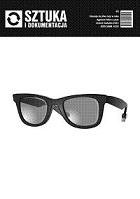Sztuka totalna czy dychotomia? Klasyczna i nowoczesna sztuka w dokumentacji i opiece
Total Art or Dichotomy? Classical and Modern Art in the Documentation and Care
Author(s): Iwona SzmelterSubject(s): Fine Arts / Performing Arts
Published by: Akademia Sztuk Pięknych w Gdańsku
Keywords: contemporary art; documentation; conservation; preservation; cultural heritage; total art; conservation methodology
Summary/Abstract: Contemporary art is dichotomous – that means that it functions either within the classic art disciplines or the innovative ones, which have existed generally from the times of Marcel Duchamp. The aim of this paper is to consider an innovative, practical and theoretical framework for the documentation and conservation of the works of art created by the new generation of artists who utilise new media and integrate their works with new technologies, interactive sonic spaces, transformation of sensual processes, etc. The key issue is the conservator’s thorough knowledge about the work of art. This is achieved through cooperation with artists. A conservator should play a role in the artworks’ pre-acquisition and should use all of his/her knowledge, including the complexity of humanities and science, one’s erudition, experience with art, sensitivity and empathy. The result is therefore an appropriate diagnosis of the object allowing the conservator to undertake the appropriate documentation method and action. The artwork shows the truth about the artist, bears the traces of the artist’s personality, has traits associated not only with their sensitivity and artistic abilities but also with the creative process and the technical solutions that the artist selected. We can discover these technical methods and materials by a scientific instrumental analysis. In consequence, innovative knowledge is related to the development of artistic ideas, the concepts and models according to which a tangible and intangible heritage is taken care of, the cognition, communication and contextual aspects of art, the principles and processes involved in perception, the senses and the potential role of new media in creating new aesthetic experiences.
Journal: Sztuka i Dokumentacja
- Issue Year: 2011
- Issue No: 5
- Page Range: 16-20
- Page Count: 5
- Language: Polish

